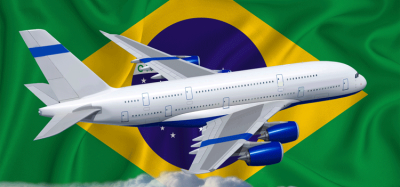Is traditional RFP standing in the way of airport innovation?
- Like
- Digg
- Del
- Tumblr
- VKontakte
- Buffer
- Love This
- Odnoklassniki
- Meneame
- Blogger
- Amazon
- Yahoo Mail
- Gmail
- AOL
- Newsvine
- HackerNews
- Evernote
- MySpace
- Mail.ru
- Viadeo
- Line
- Comments
- Yummly
- SMS
- Viber
- Telegram
- Subscribe
- Skype
- Facebook Messenger
- Kakao
- LiveJournal
- Yammer
- Edgar
- Fintel
- Mix
- Instapaper
- Copy Link
Posted: 6 December 2019 | Veovo | No comments yet
Imagine buying the high-tech car of your dreams but not taking delivery for a few years. In that time, your family grows, life changes and technology advances – fast. By the time you’re sitting behind the wheel in 2022, you no longer need to. With the rise of driverless cars, your ‘new’ car has become an outdated relic.


If you’re a buyer in an airport, you probably feel the same way about technology procurement. You resign yourself to the long, complicated and prescriptive process of selecting a product, then have to wait for years before its up and running.
Yet, organisations in every industry have used the same approach to buy products and services for decades, and for good reason. The Request for Proposal is proven to be effective in identifying requirements, making comparisons between suppliers and analysing the potential return on investment of each offer.
But how good are RFPs at delivering on the future needs of the airport and exploring ways to adopt global best practices? In an age where innovation, big data and the Internet of Things connect everything and everyone, the question is whether the conventional purchasing process can deliver.
By their nature, RFPs tend to box everything into rigid categories and silos, severely restricting the ability to find ways to do things faster, cheaper and with improved flexibility for future impacts. Today’s business needs are anything but rigid.
Digitisation is a top priority for smooth operations, meeting growing expectations and getting more people to more destinations. Airports want to improve system interoperability and share forecasts and operational data between stakeholders, to cope with unfolding situations; to innovate fast to enhance the customer experience.
Unfortunately, the reality is that the traditional airport RFP works against this by focusing on price, process and functionality.
Typically, a single RFP process is used for purchasing all products and services. In other words, the same criteria for assessing building parts for terminal construction are often applied to potentially game-changing operational technology. With the rigidity of a formal procurement process, the chosen system will not go live until two or more years after the procurement process was kicked off – a lifetime in tech terms. How many airports still want to do the same thing in two years that they want to do today?
Airport procurement departments are also under significant pressure to demonstrate value for money, meaning that short-term savings are often chosen over longer-term improvements and major innovation.
RFPs should be a tool, not an endpoint
However, many airports find themselves bogged down in the traditional procurement process, spending a disproportionate amount of time on contract negotiations and pricing at the expense of innovation.
Financial constraints and the CapEx-intensive nature of the industry have also shaped the airport software buying processes. So much so, that opting for a technology refresh rather than pushing for true business and process transformation is often chosen as the low-risk/low-cost option. All too often, this ends in a lower reward outcome, and even after this, is no guarantee of success.
The issue has forced some procurement leaders to have a major rethink around the approach to technology acquisition – one that focuses less on the ‘how’ and more on ‘what’ the airport is trying to achieve. This allows the procurement process to centre on the type of partnerships the airport needs to develop to achieve this.
How are airports making the shift to an outcome-centric, big-thinking purchasing strategy?
1) Be prepared to listen
Before you start, take time to understand how other airports around the world have tackled similar challenges, and be prepared to adapt to a better way of doing things. With airports rightfully adopting a ‘safety-first’ in their approach to change, having confidence that technology is proven in other markets negates the risk often associated with ‘new’.
2) Get stakeholder buy-in
That means establishing an appropriate governance model with customer sponsors from the business, not just IT. No ‘one-size-fits-all’ methodology. Dedicate your best and brightest – the quality of the project outcome is proportional to the quality (and time dedicated) of the input from the business.
3) Link evaluating criteria to long-term strategy
Airports are beginning to incentivise collaboration and innovation in their contracts, selecting suppliers that are in it for the long term and that are accountable, not just offering band-aid solutions.
4) Adopt a more agile approach to deployment
Create a distinct solution design phase before implementation – with a robust design upfront, clear outcomes are identified, and with fewer surprises. This also allows for faster time-to-value through agile deployment.
5) Evaluate the supplier’s partnership IQ
Will the chosen supplier be prepared to share ideas, look beyond the contract and not just obediently follow the customer’s instructions?
When it comes to tech procurement for airports, it’s time for a fresh approach.
While some may sometimes wish it, it’s not quite the ‘last call’ for airport RFPs. A procurement process that ensures technology selection is fiscally responsible, transparent and adheres to the stringent safety demands of an airport, is still very relevant. However, the conventional RFP is too long, too fixated on up-front investment and, all too often, creates limiting boxes that suppliers have to squeeze themselves into. Worst of all, it assumes the buyer already knows the exact solution to their problem. The traditional process, if successful, delivers the result the customer asks for, not necessarily what they need.
Buying technology in the 21st century – from airport software to terminal hardware – can no longer be viewed solely through the lens of cost cutting and risk avoidance. Instead, traditional levers should be balanced with how new technology holistically fits in with an organisation’s strategic blueprint, in support of long-term business goals.
Purchasing leaders strive to add value. With the rise of the digital airport, many are now taking the opportunity to look beyond the conventional procurement process and position themselves as a strategic enabler.
Good purchasing decisions that let innovation fly? Welcome aboard.


















